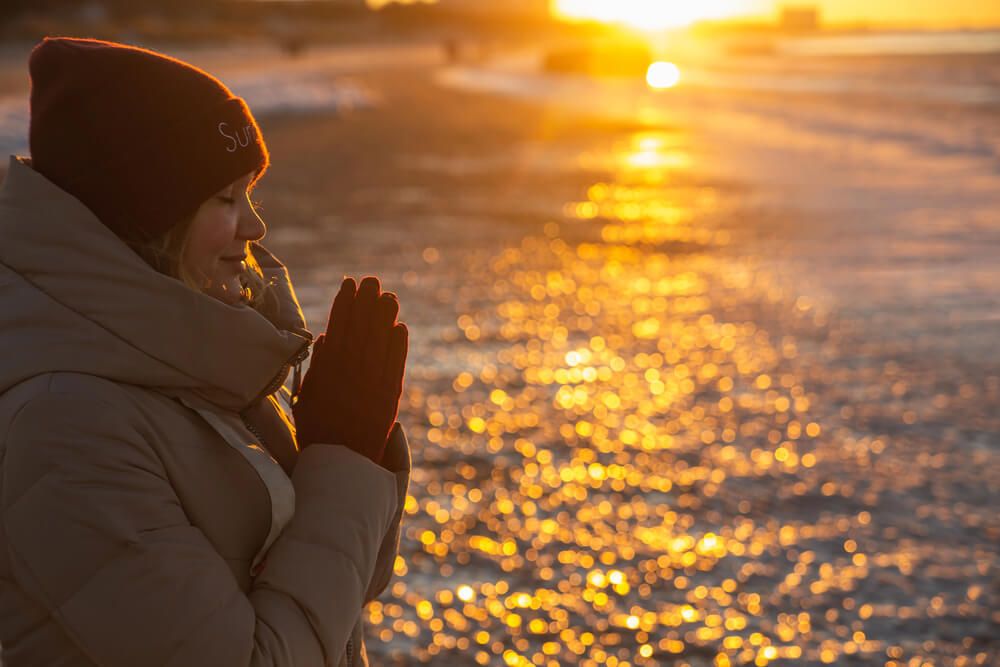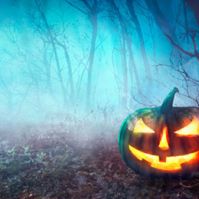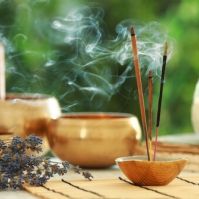
The winter solstice marks the shortest day and longest night of the year, and people across cultures have honored this turning point for centuries. From feasts and fires to quiet moments of reflection, winter solstice rituals celebrate light’s return and the deep stillness of the season.
Are Winter Solstice Rituals Pagan?
Yes, many winter solstice rituals have pagan roots. Ancient European and Near Eastern pagan societies tracked the sun’s cycle, celebrating its strength with the festival of Litha in midsummer and then honoring its return after the darkest night with ceremonies and rituals centered on renewal, fertility, and survival.
Modern practices inspired by the Wicca religion often draw from these older solstice observances. Lighting candles, decorating with evergreens, and celebrating the rebirth of the sun are examples of how ancient rituals continue today. While some solstice traditions have been woven into Christian and secular customs, the pagan origins remain an important part of their history.
What Are Traditional Winter Solstice Rituals Around the World?
The solstice is universal, but celebrations vary widely across cultures.
St. Lucia’s Day
In Scandinavia, St. Lucia’s Day blends Christian and Norse traditions. Girls dressed in white gowns and red sashes wear crowns of candles to honor St. Lucia, a martyr known for bringing light to the oppressed. This festival of lights carries echoes of pre-Christian fires once lit to chase away spirits during the longest night.
Saturnalia
Similar to the celebration of Lammas, which honored the harvest in late summer, the Romans celebrated agriculture with feasts, games, and gift exchanges at the winter solstice. Named after Saturn, the god of agriculture, Saturnalia and its traditions of joy and generosity strongly influenced later Christmas practices.
Yalda
In Iran, the Yalda Night festival celebrates the triumph of light over darkness. Families gather to eat pomegranates, nuts, and watermelon, foods symbolizing the warmth and vitality of summer. Poetry readings, storytelling, and staying awake until dawn ensure that participants witness the rebirth of the sun.
Soyal
For the Hopi people of northern Arizona, Soyal welcomes the kachinas, protective spirits who bring blessings for the coming year. Ceremonies include prayers, purification, crafting prayer sticks, and dancing. It’s a powerful expression of renewal, community, and connection with spiritual guardians.
Dongzhi
In China and other parts of East Asia, families observe the Dongzhi Festival during the winter solstice. It centers on gathering together to share warm foods, especially tangyuan – sweet rice dumplings that symbolize reunion and harmony. For many, it’s also a time to honor ancestors, reflecting on continuity across generations while welcoming the return of longer days.
Yule Altar
In parts of Europe and among modern pagans, building a Yule altar is a way to mark the winter solstice. An altar might feature personal items, evergreen branches, fruit, or stones, surrounded by candles representing the return of light. Lighting each candle becomes a small ritual of hope, connecting participants to the sun.
What Are Simple Ways To Celebrate the Winter Solstice in Your Own Life?
While large festivals are tied to specific cultures, many practices are simple and adaptable for anyone, including ordained ministers looking to incorporate meaningful traditions into ceremonies.
Reflect and Express Gratitude
The winter solstice invites reflection. Take time to write down moments of gratitude from the past year, such as relationships, lessons learned, or challenges overcome. Ministers can guide communities in journaling, meditations, or group reflections, creating space for release and renewal. Gratitude during this season is more than a practice; it’s a ritual that honors resilience and prepares the spirit for the brighter days ahead.
Celebrate Nature
Evergreens, holly, and pinecones have long been symbols of life’s endurance through winter. Bring them into your space as decorations, wreaths, or altar pieces. Spending time outdoors, even in the cold, strengthens connection to the earth. Ministers might lead a nature walk, encourage mindful stargazing, or guide small gatherings to watch the sunrise on the solstice morning. These simple acts align with the ancient sense of reverence for the natural world.
Practice Winter Solstice Rituals Your Way
Ultimately, winter solstice rituals are about honoring light, change, and connection. Whether you choose to light candles, share a meal, or reflect in silence, the meaning comes from intention. Each act reminds us that even in the darkest time of year, hope and renewal are waiting to emerge.
For many, this season also stirs a deeper calling to serve others. The spirit of the solstice, guiding light through darkness, mirrors the work of ministry: offering comfort, meaning, and renewal to those around us. At the Universal Life Church, ministers come from diverse faiths and worldviews, yet all share a commitment to honoring life’s sacred moments.
If you feel called to lead winter solstice rituals or any ceremonies of significance, become a minister through ULC and bring light to your community in your own way.



